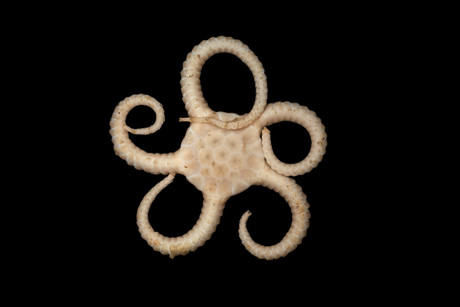New ocean species are evolving fastest in Antarctica

New research led by Museums Victoria has overturned previous theories about how the biodiversity of our oceans evolved, with important implications for conservation.
The deep sea is the world’s largest ecosystem — where ancient fauna or ‘living fossils’ survive at the same time that new species are fast evolving — and requires just as much protection as more familiar habitats, like coral reefs and mangroves. Yet a lack of knowledge about marine life in these dark waters has made it unclear how best to protect and preserve these environments from human exploitation like fishing or deep-sea mining.
Biologists have long speculated that evolution is ‘sped up’ by relatively high tropical temperatures, with development being slower in cooler and deeper waters. However, the new research finds that evolution does not follow one course, but rather depends on the geological, climatic and biological history of each ecosystem.
To study patterns of evolution across the world’s oceans, researchers led by Dr Tim O’Hara, Senior Curator of Marine Invertebrates at Museums Victoria, focused on the evolution of deep-sea ‘brittle stars’ (Ophiuroidea). These spiny echinoderms, with a typically circular body and five long arms, are abundant on the seafloor globally, making them ideal for studying large-scale patterns of how marine life arose and spread around the planet.
Utilising DNA data collected on 2017’s ‘Sampling the Abyss’ voyage — a month-long expedition that explored the abyssal ocean depths off the eastern coast of Australia — the researchers were able to reconstruct a comprehensive picture of how brittle stars have evolved across the Indian and Pacific Oceans in the Southern Hemisphere. Dr O’Hara was Chief Scientist on the voyage, which took place aboard the CSIRO Marine National Facility research vessel Investigator.
“Sequencing the DNA from these specimens can unlock the history of life on our planet,” Dr O’Hara said.

Curiously, speciation was found to be highest in the coldest region: Antarctica. These waters appear to still be recovering from extinction events of tens of millions of years ago, when ice sheets began to dominate and water temperatures plummeted. New species that evolved as a result are still in the process of diversifying, and are doing so rapidly.
By contrast, although diversity in tropical deep seas (deeper than 200 m) is high, it is not an environment that is rapidly producing new species, but rather accumulated its rich biodiversity over millions of years. Tropical deep seas are a refuge particularly for living fossils, mainly due to relatively stable conditions over time.
Dr O’Hara hopes his team’s research, published in the journal Nature, will serve as the first stage of a global project to shed further light on processes of evolution in deep-sea environments.
Follow us on Twitter and Facebook for the latest industry news. To receive our bimonthly magazine and weekly newsletters, click here.
Colon cancer DNA in blood can guide chemo decisions
A simple blood test could change how doctors decide which patients with colon cancer need...
Non-invasive blood test helps rule out oesophageal cancer
Designed and developed in Australia, the PromarkerEso test is designed to offer a quick,...
Taste-based flu test enables rapid diagnosis
The diagnostic tool consists of the sensor molecule thymol and a virus-specific sugar building...



